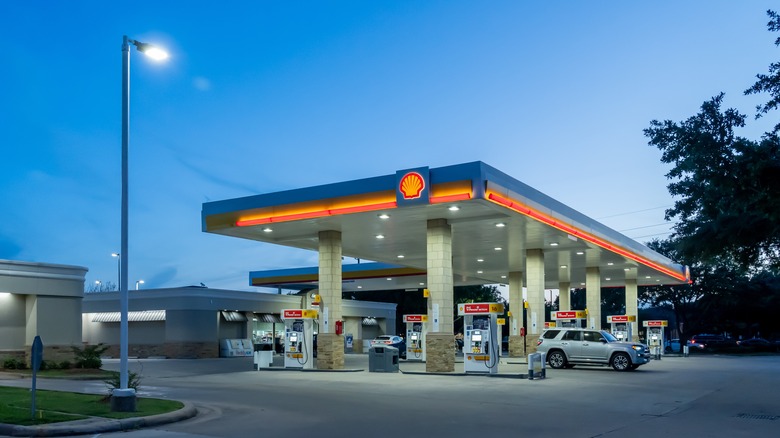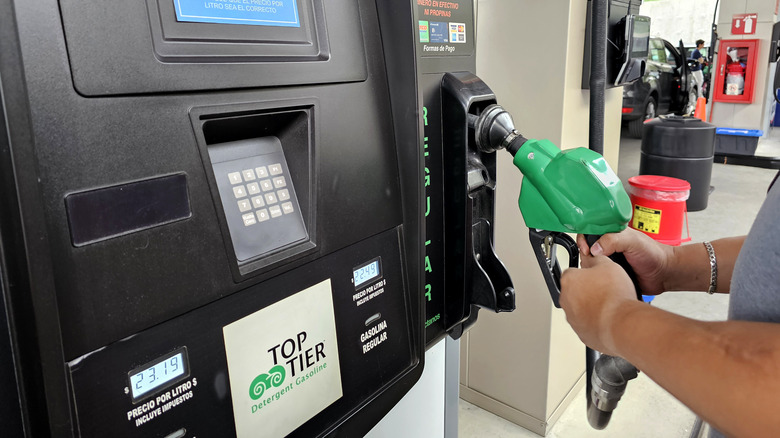Which Gas Stations Have The Best Quality Gas?
When it comes to gas, most of us find the nearest station and fill up on the spot, without much thought. But what about gasoline quality? You might be shocked to know that service stations have varying qualities of fuel, with horror stories online of people filling up on water-laden gas, nearly destroying their engines.
The best service stations are any that offer TOP TIER™ fuel. If you're unfamiliar, this type of gas is approved by carmakers like BMW, GM, Honda, Toyota, and others, containing twice the amount of EPA-required detergents, which is said to improve fuel economy while minimizing engine deposits. Savvy consumers look for the TOP TIER™ sign on pumps at participating stations to be sure it's available. Drivers can also download the proprietary TOP TIER™ gas app to facilitate finding the nearest approved station.
And while there are apps to find cheap gas, like Upside and GasBuddy, the lowest price shouldn't be the primary concern when filling up; focus on contaminant-free, clean fuel if you can. Gas is no different from anything else that goes into your car, whether that's oil, fluids, or air — it should be clean and of the best quality, to keep your engine running smoothly. The best stations are reputable chains like Shell, Costco, Mobil/ExxonMobil, Chevron, and Sinclair, all of which offer TOP TIER™ gas, along with their own special additives. Also note, high octane gas doesn't necessarily mean better quality gas, and might not even be suitable for your car's engine.
Avoiding bad gas
Obviously, you won't always be able to find and fuel up on TOP TIER™ gas, especially when traveling or when you're in the tricky situation of driving on empty and simply need to find anything. But if you find yourself at what seems like a sketchy gas station and want to avoid fueling up on potentially contaminated gas, there are red flags to watch for.
The most obvious thing to assess is the overall condition of the gas station; if it looks run down, with rusty old pumps and cracked concrete under the canopy, and if it's possibly a non-franchised, non-big brand station, you might want to reconsider fueling there. While you can't visually inspect gas for impurities like water, rust, sediment, or debris floating in poor storage tanks, you can protect yourself to some extent. Look for state inspection seals, as many regions require up-to-date calibration and safety checks with dated stickers to verify it.
If the pump leaks at the nozzle or hose, or if the flow doesn't shut off when the tank is full, it could indicate bigger maintenance issues. Another potential warning sign, which might seem silly in this economy, is very low prices. This could mean a retailer is trying to get rid of a defective batch of gas, or they're cutting corners on quality and maintenance to lower prices at the pump. Be cautious, and if possible, seek out stations offering TOP TIER™ gas.

